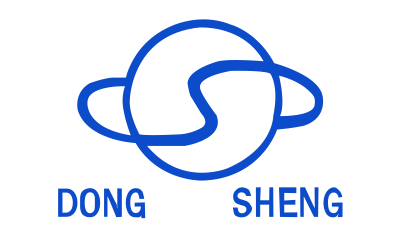How to Achieve Maximum Recovery Rate in Oil Production Through Optimal Development Methods?
I. Introduction Oil Production is a Complex Process.
The optimal development method is crucial for achieving maximum recovery. For oilfield development, the goal of effectiveness is to extend the high-production and stable-production period as much as possible, ultimately extracting the maximum amount of crude oil, achieving a high final recovery rate and good economic results. However, achieving this goal is not easy. Identifying the reservoir type and selecting a suitable reservoir type is the foundation and basis for determining the oilfield development method. The development method must not only adapt to the different characteristics of the reservoir but also change as the development process progresses. Therefore, these two issues must be carefully considered before an oilfield is put into development.
In this process, advanced reservoir stimulation and oil production technologies are crucial, and Artificial Lift technology is one of the core means to improve fluid delivery to the surface.
II. Artificial Lift Oil Production Technology
1. Artificial Lift is the dominant mechanical oil production method, accounting for approximately 95% of all Artificial Lift wells. my country has developed a complete series of pumping units, rods, pumps, and related supporting technologies. Pumping units include eight types: conventional beam pumping units, special-shaped beam pumping units, extended-spacing pumping units, chain pumping units, and beamless pumping units. Sucker rods include conventional solid sucker rods, hollow sucker rods, continuous sucker rods, wire rope sucker rods, and fiberglass sucker rods of various strength levels. Based on the requirements of extraction and different fluid properties, special pumps such as fixed-top fixed-rod pumps, fixed-bottom fixed-rod pumps, moving-bottom fixed-rod pumps, whole-tube pumps, combined-tube pumps, soft-seal pumps, heavy oil pumps, sand-resistant pumps, gas-resistant pumps, corrosion-resistant pumps, double-acting pumps, bridge pumps, and hollow pumps have been developed, forming a complete series of oil pumps. Since the 1980s, based on the introduction, digestion, and absorption of advanced foreign experience, research and development have been conducted on downhole diagnostics and rod pump optimization design technologies for oil wells, achieving an average compliance rate of 85%–90%, thus improving the efficiency and management level of oil wells.
2. Electric Submersible Pump (ESP) Oil Production Technology :
ESPs consist of three parts: downhole, surface, and power transmission. The downhole part mainly includes the submersible motor, protector, oil-gas separator, and multi-stage centrifugal pump; the surface part mainly includes the transformer, control panel, and pump wellhead; the power transmission part is the armored submersible cable. China has developed four series of ESPs: the A series suitable for casing outer diameters of 139.7mm, and the QYB, QYDB, and QQ series for other casing diameters, totaling 37 models. The maximum head is 3500m, and the maximum rated displacement is 700m³/d. Seven models of cables with a rated withstand voltage of 3kV have been produced. Research has been conducted on ESP oil production design, parameter optimization, diagnostics, pressure testing, and wax removal and prevention technologies. Electric submersible pumps (EMPs) account for 4% of oil well production, but their fluid discharge volume accounts for 21.7%, making them an important technology for oilfield lifting.
3. Hydraulic Piston Pump Technology:
A volumetric oil production technology that relies on high-pressure hydraulic fluid to drive a downhole piston pump.
Advantages: Efficiency up to 40–60%; Maximum head up to 5486 m; Discharge up to 1000 m³/d; Applicable to vertical wells, deviated wells, cluster wells, and horizontal wells; Suitable for high-pour-content oil production and low-water-cut oil wells; the technology system is relatively complete.
4. Progressing Cavity Pump (PCP):
A surface-driven device drives the sucker rod, causing the downhole screw pump to rotate and lift crude oil.
Advantages: Applicable to heavy oil and high-viscosity crude oil; Good applicability to sand-producing wells; Simple structure and easy installation; Widely used in onshore medium-deep wells and offshore oil wells.
5. Gas Lift Technology:
Injecting high-pressure natural gas or nitrogen into the well reduces the density of the well fluid, achieving lift.
Features: Simple tubing structure.
Not limited by well depth or inclination.
Lift depth up to 3658 m.
Complete equipment sets have been serialized (gas lift valves, gas source stations, compressors, tubing technology, etc.).
Widely used in Zhongyuan, Liaohe, Tarim, and Tuha oilfields.
6. Other Auxiliary Artificial Lift Technologies:
Includes: Hydraulic jet pumps.
Hollow pumps.
Rod pumps without tubing.
These methods play an important role in special well conditions.

III. Importance of Low-Permeability Oil and Gas Field Development
In China, low-permeability oil and gas resources reach 201.7 × 10⁸ tons, accounting for 24% of total resources. With increasing pressure to maintain stable production in conventional oilfields, low-permeability reservoirs have become an important direction for future reserve and production increases.
The challenges of low-permeability reservoirs lie in:
Low permeability and high resistance to crude oil flow.
Early water breakthrough and water flooding are common.
Crude oil displacement efficiency is low.
Therefore, advanced development technologies must be employed, such as:
Horizontal wells.
Fracturing and acidizing.
Water injection development.
High-efficiency artificial lift technologies (such as screw pumps and high-pressure jet pumps).
Practice has proven that horizontal wells + artificial lifts have become the most effective development combination for low-permeability reservoirs.
In general, oilfield development is a continuous process of understanding and adjustment, requiring advanced methods of understanding and modification technologies to achieve effective development. Therefore, continuously improving the understanding of factors affecting oil and gas field recovery rates, and developing more effective extraction technologies through research to achieve the highest recovery rate with minimal economic investment, will be a crucial task for all geologists for a long time to come. However, Dongsheng has consistently cultivated expertise in this field, boasting over 20 years of industry experience. Simultaneously, it continuously strengthens its R&D and production capabilities, providing customers with high-quality pumping dry pumps, downhole pumps, and specialized pumping dry pumps, encompassing hundreds of models. Dongsheng has become a well-known oilfield service provider in China and also enjoys a small reputation overseas. Renowned companies such as ZPEC, Sinopec, SLB, and Weatherfrod are among our cooperative clients.

